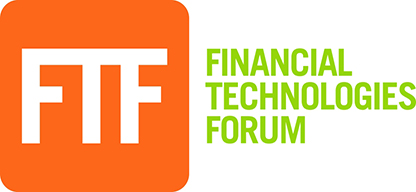Instructor was extremely knowledgeable, energetic, and passionate about the material.
- Robyn Daicos, AVP Securities Operations, Manulife (Understanding Derivatives & Other Complex Securities Attendee)
Very informative class. Instructor was good and could speak to topic very well. Was very informed and patient with answering questions. Was very interested in making sure everyone got the information and understanding they required. Lots of good examples.
- Colleen Cosgrove, Director, System Implementation, Quartet FS (Intro to Collateral Management Attendee)
Jeff was Excellent! I’m new to collateral and this was something that I found to be very effective for me and answered many of my questions. Five stars!
- Brett Boliver, Support Engineer, Omgeo (Intro to Collateral Management Attendee)
High energy instructor helps with non exciting material. Met my expectations of an overview for derivatives to help my understanding.
- Dow Veeranarong, Director, Equilend (Understanding Derivatives and Other Complex Securities Attendee)
Knowledgable and well organized. Better than other classes I have taken on the same subject.
- Ken Walser, Derivatives Operations Analyst, Delaware Investments (Understanding Derivatives and Other Complex Securities Attendee)
Very well instructed class and very informative.
- Carley Keefe, Internal Audit Analyst, Goldman Sachs (Understanding Derivatives and Other Complex Securities Attendee)
Enjoyable, informative presentation, enthusiastic instructor.
- Ethan Poskanzer, Analyst, Goldman Sachs (Understanding Derivatives and Other Complex Securities Attendee)
Phil did a great job. Great course, very informative.
- Peter Groglio, Legg Mason (Understanding the Securities Industry Attendee)
Phil was an amazing speaker and extremely knowledgeable and engaging. I really enjoyed this class and I am looking forward to participating in many more in the future.
- Christina Hebert, Babson Capital Management (Understanding the Securities Industry Attendee)
So informative AND interesting. Phil does a great job at explaining the concept and keeping us engaged. Great venue!
- Betsy Siddon, Brandywine Global Investment Management (Understanding the Securities Industry Attendee)
Phil was outstanding. The materials would have been more robust with some additional bullet points. Time was well-managed and used efficiently. Will recommend this program and Phil Sindel.
- Nicholas Kowalski, TriState Capital (Understanding the Securities Industry Attendee)
I thought it was well run and the speakers/panel members were very knowledgeable and informative.
- SecOps Attendee
It was a very positive experience with good networking opportunities. The venue was excellent.
- SecOps Attendee
Enjoyed hearing about latest trends in the industry, as well as how people are dealing with difficult issues.
- SecOps Attendee
Fruitful interaction with clients and prospects.
- SecOps Attendee
It was good to hear peers sharing their experiences openly.
- SecOps Attendee
It was my first FTF event and I enjoyed it.
- SecOps Attendee
Excellent conference - topics are relevant and speakers are well informed.
- SecOps Attendee
The conference provide good content through lively discussions. The venue was excellent.
- SecOps Attendee
Speakers were numerous and great. All highly qualified to speak and provided excellent insight into our industry.
- SecOps Attendee
The SecOps conference is a valuable forum for peers to network and discuss the real issues operations professionals face in their business. Our session discussing the reality vs. ideal world scenarios was well received and sparked ongoing discussions beyond the session itself.
- Bob Leaper, PanoVista.Co LLC (SecOps Attendee)
The conference was very informative and relevant for the current state of derivative regulations.
- Michael Daley, Director of Fixed Income Operations, Loomis Sayles (DerivOps Attendee)
You always have insightful subject matter experts on your panels.
- David Gallagher, VP, Collateral Management, Lombard Risk (DerivOps Attendee)
The conference provides relevant industry insights from practitioners for practitioners.
- Björn Schumburg, Senior Business Consultant, Derivatives Implementation, SimCorp Canada (DerivOps Attendee)
The event is essential for anyone who has a portfolio of derivatives or supports clients who have exposure to derivatives.
- Frank Lupica, Director, DTCC (DerivOps Attendee)
Excellent.
- Robert Boese, Director, Debt and Derivative Operations, Freddie Mac (DerivOps Attendee)
I thought the conference was very useful and provided its participants with ideas for how to address some of the challenges that Dodd-Frank regulations present.
- Shannon Pacheco, Head of Operations, MEAG New York Corporation (DerivOps Attendee)
The speakers and topics covered were timely and very relevant to the current market environment.
- Robert Ferryman, Director of Operations, Mizuho Capital Markets (DerivOps Attendee)
The conference gave a very informative overview of the challenges faced by the industry currently. It targeted at specific initiatives and regulations which are critical to derivative operations.
- Jessica Lua, Senior Vice President, Head, Trade Operations, GIC (DerivOps Attendee)
This was one of the best DerivOps conferences that has been put together.
- Kathryn Landuyt, Securities Analyst, OTC Derivatives, PPM America (DerivOps Attendee)
The mix of presentations and panel discussions was great. Thank you!
- Sandy MacLean, Senior Operations Analyst, Reconciliation, CPP Investment Board (ReCon Attendee)
Great experience. Thank you!
- Beth Vogel, Director, Investment Management Operations, Federated Investors (ReCon Attendee)
The speakers were great and the program was organized.
- Liliana Ferreira, Director, CSA Negotiations, Portfolio Reconciliation and Collateral Controls, Societe Generale (ReCon Attendee)
The content was very relevant and engaging, and the attendees were fully engaged in the lively panel discussions.
- Paul Clapis, Director, Professional Services, SunGard (ReCon Attendee)
It’s a great opportunity to network with both vendors and peers while identifying the latest trends in the industry.
- Rodney Hulslander, AVP Asset Control, Reconciliation, MFS Investment Management (ReCon Attendee)
Great forum. Knowledgeable and well-versed speakers. Would love to attend future events.
- Ken Helmrich, AVP, BSA Supervisor, Hudson City Savings Bank (Financial Crime & AML Forum Attendee)
Very impressive conference. The format provides unique access to industry thought leaders. The knowledge and ideas I gained will help me better adapt to changing trends.
- Matthew Lyberg, Vice President, Acadian Asset Management (Performance Measurement Attendee)
Great Job. The FTF staff were great!
- Bert Melchner, Program Manager, Enterprise Solutions, General Electric Asset Management (ReCon Attendee)
Excellent overall event. Thank you!
- Robert Perdock, COO, Macquarie Group
Excellent event with the right level of participants to add the most value to firms trading products requiring collateralization.
- Joseph Streeter, VP, Collateral Product Manager, State Street (Collateral Management Forum Attendee)
The Forum format provides a great networking opportunity since there is a very focused topic and group of delegates.
- Deborah Bonfield, VP, Senior Sales, Lombard Risk (Collateral Management Forum Attendee)
A good opportunity for networking with peers in the industry.
- Joyce Lim, Vice President, Credit Agricole CIB (Collateral Management Forum Attendee)
One of the most informative conferences I've attended. Great progression from basic content to practical significance. Quite enjoyable.
- Bill Elwell, AVP/Senior Tax Counsel, Hartford Financial Services (FATCA Breakfast Attendee)
FTF continually proves its commitment to organizing and delivering content rich, educational events. The events cover specific topics relevant to mission critical workflow and operations within the financial industry. I strongly recommend attending FTF's events.
- Marc Caccavale, Client Relations, SS&C Technologies (Performance Measurement Attendee)
FTF always provides content rich conferences, with leading industry experts, with great networking. The conference administration and amenities are always flawless.
- Andrew Clipper, Principal, Knickerbocker Advisory Services (Performance Measurement Attendee)
FTF has provided a very thoughtful and relevant discussion of the changes currently impacting the industry.
- Matt Kuznacic, Sr. Project Manager, William Blair (DerivOps Attendee)
I would highly recommend FTF’s Derivatives Operations conference. I come to the annual Chicago Conference and they also have a New York conference that’s great. It’s a great time to hear from both buy side peers in my case, vendors that offer solutions to some derivatives challenges that you may be facing and also meet with clearing house representatives and FCMs and it’s just a great place to network with peers and to hear what’s going on in derivatives operations.
- Kevin Walker, Vice President, Manager of Derivatives Administration, Nuveen Investments (DerivOps Attendee)
Great course--as someone with very little SM knowledge, this course was really insightful and provided clarity on key industry topics, specifically securities lending and derivatives. I would definitely recommend it.
- Diana Gialo, SunGard (Understanding the Securities Industry Attendee)
Great conference. Certainly learned a lot and enjoyed the facilitator.
- Kelly Wallace, Assistant Marketing and Client Service, Westfield Capital Management (Understanding the Securities Industry Attendee)
Very helpful and insightful conference. Thank you.
- Lenny Bambina, Vice President, Derivatives, AQR Capital Management (DerivOps Attendee)
Well organized and put-together. Impressive speakers and panelists.
- Tatyana Yegorova, Audit Director, MetLife (HedgeOps Attendee)
I liked the varied areas that were represented on each panel.
- Karla McKenna, Director, Citi (CAPCon Attendee)
Am always glad to participate in an FTF event.
- Sue Mayham, Corporate Actions Expert (CAPCon Attendee)
Excellent forum. Very much enjoyed the more informal talks as it engaged the audience more.
- Katie O’Connor, Senior Product Specialist, Information Mosaic (CAPCon Attendee)



